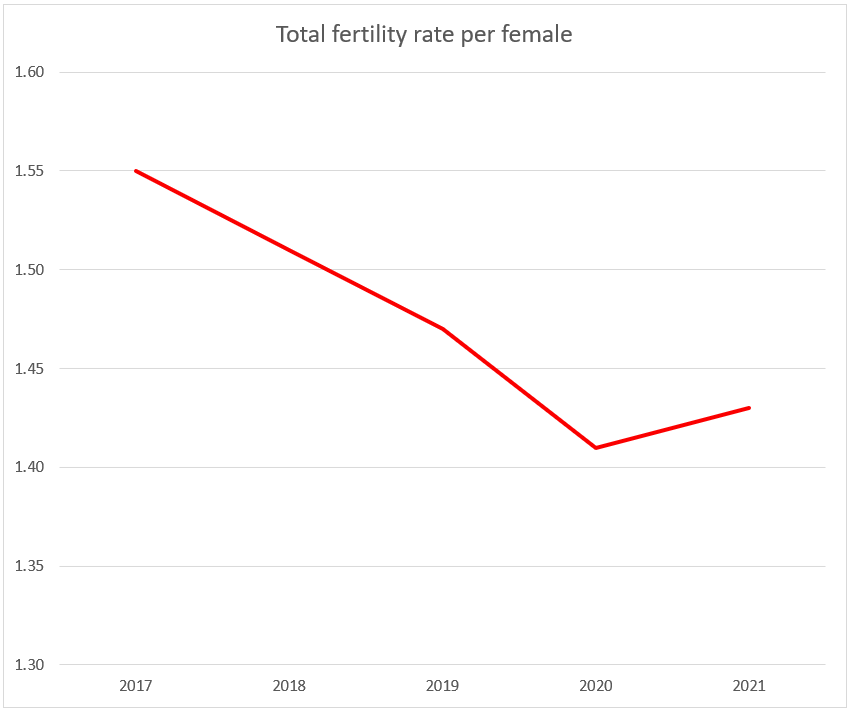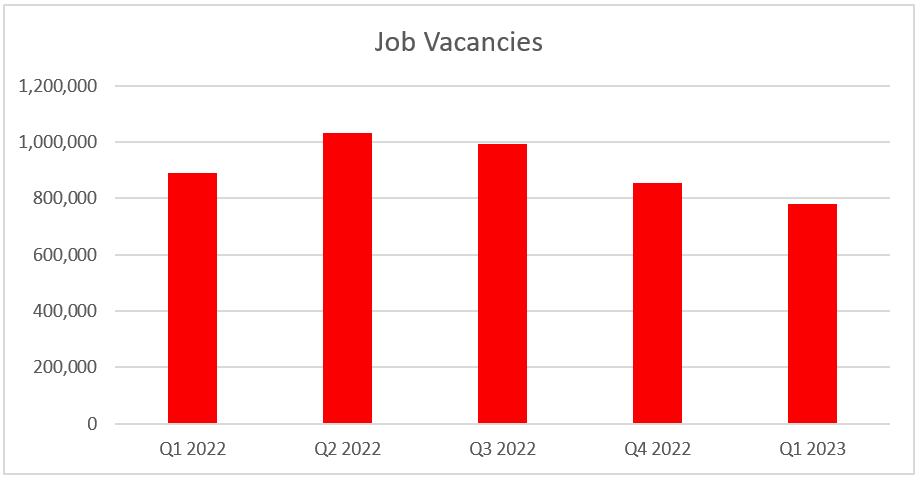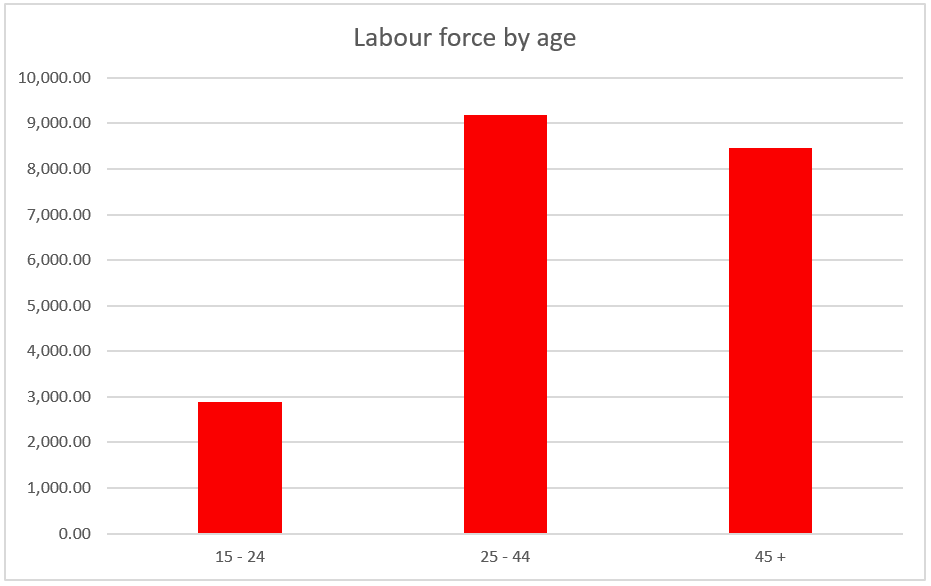Canada is facing a significant labour shortage, with almost a million job vacancies recorded in February 2023. This shortage has been attributed to various factors, such as an aging population, declining birth rates, reduced immigration, and the shift to remote work.
In this blog post, we will explore the root causes of the labour shortage, its impact on the Canadian economy, businesses, and workers, and examine the government’s response to this pressing issue. Additionally, we will discuss potential solutions and actions that can be taken by workers and businesses to address this challenge collectively.
Unravelling the Root Causes of Labour Shortage in Canada
As Canada faces an unprecedented labour shortage, understanding the factors behind this pressing issue becomes essential. In this section, we will delve into the root causes of the labour shortage in Canada, examining the significant impact of an ageing population, declining birth rates, reduced immigration, and the evolving landscape of remote work on the nation’s workforce.
By comprehending these underlying factors and considering recent data on the age distribution of the labour force and fertility rates, we can gain valuable insights into the challenges that lie ahead and work towards sustainable solutions.

Aging Population – Impact on the Available Workforce and Labour Supply
One of the primary causes of the labour shortage is Canada’s ageing population. As the data shows, in June 2023, the age group of 45 and above comprises 8,459.20 thousand workers, which is a substantial portion of the labour force. As more individuals from this age group retire, there is a significant decrease in the number of workers within the working-age bracket, leading to a scarcity of skilled professionals.
Declining Birth Rates – Smaller Pool of Potential Workers
The data on fertility rates from 2017 to 2021 illustrates a concerning trend of declining birth rates in Canada. With total fertility rates per female dropping from 1.55 in 2017 to 1.43 in 2021, the country is experiencing a reduction in the number of young people entering the workforce. This drop in new entrants has led to a smaller pool of potential workers available to meet the demands of various industries, further contributing to the labour shortage.

Source: Statistics Canada. Table 13-10-0418-01 Crude birth rate, age-specific fertility rates and total fertility rate (live births)
Shift to Remote Work – Influencing Labour Demand in Different Regions
The pandemic-induced shift to remote work has disrupted traditional workforce patterns. As the data indicates, the age group of 25 to 44 constitutes 9,181.60 thousand workers in June 2023, indicating the presence of a substantial workforce segment that has likely experienced changes due to remote work opportunities.
This shift has affected the distribution of labour demand in different regions, as remote work allows individuals to move to areas with lower labour shortages, potentially exacerbating the problem in some regions while opening up opportunities in others.
The labour shortage in Canada is a multi-faceted challenge driven by a combination of factors, as evidenced by the recent data on the age distribution of the labour force and fertility rates. The ageing population, declining birth rates, and the evolving landscape of remote work all play vital roles in shaping the labour market’s dynamics.
Sectors Most Affected by the Labour Shortage
The labour shortage in Canada is significantly impacting various sectors, leaving them grappling with a scarcity of skilled workers. Among the most affected are the healthcare, construction, manufacturing, and food service industries.

Healthcare
The labour shortage has hit the healthcare sector particularly hard, with a significant demand for skilled healthcare professionals that remains unmet. As the Canadian population ages, the need for medical services continues to grow. However, the healthcare workforce is facing challenges in recruiting and retaining qualified professionals, such as nurses and doctors. The ageing population is not only increasing the demand for medical services but also leading to retirements within the healthcare workforce, further exacerbating the shortage.
Ratio of new hires to vacancies in Healthcare and Social Assistance, Canada 2016 – 2022, Chart
Source: Statistics Canada. Labour shortage trends in Canada
Construction
The construction industry is experiencing a dearth of skilled tradespeople, including carpenters, electricians, and plumbers. The ageing workforce in this sector, coupled with the declining number of young workers entering the construction trades, has led to a significant labour shortage. Additionally, the growing demand for infrastructure development and housing further intensifies the need for skilled construction workers.
Ratio of new hires to vacancies in Construction, Canada 2016 – 2022, Chart
Source: Statistics Canada. Labour shortage trends in Canada
Manufacturing
Canada’s manufacturing sector is also grappling with the effects of the labour shortage, especially in finding skilled workers, such as machinists, welders, and assemblers. The industry’s reliance on specialized skills has made it challenging to fill vacancies. As a result, manufacturing companies are facing production delays and are unable to meet the rising demand for their products.
Ratio of new hires to vacancies in Manufacturing, Canada 2016 – 2022, Chart
Source: Statistics Canada. Labour shortage trends in Canada
Food Service
The food service sector, which includes restaurants and catering services, is facing significant challenges in finding and retaining workers to fill positions for cooks, servers, and other food service workers. The industry’s reliance on a diverse range of skills and the need for a large workforce to accommodate customers’ demands make the labour shortage particularly impactful.
Ratio of new hires to vacancies in Food Service, Canada 2016 – 2022, Chart
Source: Statistics Canada. Labour shortage trends in Canada
The labour shortage in Canada has a profound impact on various sectors, with healthcare, construction, manufacturing, and food service among the most affected. Addressing the labour shortage in these critical sectors requires a multifaceted approach. Encouraging and supporting education and training programs in these industries can help develop a skilled workforce.
Additionally, attracting immigrants with relevant expertise and promoting workforce mobility can alleviate the shortage. Collaborative efforts between the government, businesses, and workers are essential to finding viable solutions that ensure a sustainable future for Canada’s labour market and economy.
Impact of the Labour Shortage on Businesses and the Economy
The labour shortage in Canada has far-reaching consequences for businesses and the broader economy. Struggling to find qualified workers, businesses face recruitment challenges, hampering their ability to meet customer demands and maintain efficient operations.

Struggling to Find Workers
The labour shortage in Canada has created significant hurdles for businesses seeking to fill vacant positions with qualified employees. Companies across various sectors find it increasingly challenging to attract skilled workers, leading to prolonged job vacancies. This struggle to find suitable candidates not only hampers business operations but also places additional stress on existing employees who may need to take on additional responsibilities to compensate for the shortage.
Wage Inflation
As businesses vie for a limited pool of qualified candidates, the competition for talent intensifies, driving up wages. To entice skilled workers, companies often offer higher salaries and more enticing benefits packages. While this may benefit workers in the short term, it can contribute to wage inflation, increasing the overall cost of doing business. Moreover, higher wages can result in price increases for goods and services, leading to a broader impact on inflation and affecting the cost of living for consumers.
Longer Wait Times
The labour shortage directly impacts service-based industries, leading to longer wait times for customers. Whether it’s in retail, hospitality, or customer service, businesses often struggle to maintain efficient service levels due to understaffing. As a consequence, customer satisfaction may decline, and businesses may risk losing their competitive edge. The inability to provide timely services can also result in decreased revenue and reputation damage, affecting the long-term success of the company.
Strain on Public Services
The labour shortage’s impact extends beyond the private sector, exerting considerable strain on public services, particularly in healthcare and education. The growing demand for healthcare services from an ageing population, combined with a shortage of healthcare professionals, creates significant challenges for healthcare facilities. Likewise, the education sector faces difficulties in recruiting and retaining qualified teachers, resulting in larger class sizes and reduced access to quality education.
The labour shortage in Canada has far-reaching consequences for businesses and the broader economy. Struggling to find qualified workers, businesses face recruitment challenges, hampering their ability to meet customer demands and maintain efficient operations. The resultant wage inflation not only increases the cost of doing business but also affects the cost of living for consumers. Longer wait times in service-based industries lead to reduced customer satisfaction and potential revenue losses.
Moreover, the labour shortage exerts immense pressure on public services, especially healthcare and education, impacting the quality and accessibility of these essential services. Addressing the labour shortage requires collaborative efforts from all stakeholders, including the government, businesses, and workers.
The Government’s Response to the Labour Shortage
In response to the significant labour shortage in Canada, the government has proactively implemented measures to address the critical challenges faced by businesses and workers. This section explores the key strategies employed by the Canadian government to mitigate the impact of the labour shortage.

Attracting More Immigrants
Recognizing the significance of immigration in sustaining the labour force, the Canadian government has been actively implementing strategies to attract more skilled immigrants. Through various immigration programs and initiatives, the government aims to address specific labour shortages in key industries. By prioritizing the selection of immigrants with relevant skills and qualifications, Canada seeks to bolster the workforce with individuals who can contribute to the country’s economic growth and development.
Investing in Education and Training
To bridge the skills gap and equip Canadians with the competencies required for the jobs of the future, the government is focusing on significant investments in education and training programs. By aligning educational curricula with the evolving demands of the labour market, the government aims to nurture a highly skilled and adaptable workforce. These investments not only enhance individuals’ employability but also foster innovation and competitiveness across various industries.
Facilitating Remote Work
Recognizing the impact of the shift to remote work on labour distribution, the government has been implementing policies to facilitate telecommuting. By supporting remote work arrangements, the government aims to balance labour demand across regions and industries. This approach also opens up opportunities for workers in areas with lower labour shortages, promoting workforce mobility and potentially easing pressure on businesses facing severe workforce deficits.
Fostering a Flexible Labour Market
The government acknowledges the importance of a flexible labour market that can adapt to changing economic conditions. By promoting progressive employment policies, the government aims to facilitate businesses in hiring and retaining workers based on market demand. This adaptability allows companies to adjust their workforce according to fluctuating labour needs, thereby enhancing business resilience and responsiveness.
The Canadian government’s response to the labour shortage reflects its commitment to fostering a dynamic and sustainable labour market. By attracting more skilled immigrants, investing in education and training, facilitating remote work, and fostering a flexible labour market, the government is taking proactive steps to address the pressing issue of labour scarcity.
Through these strategic measures, Canada seeks to bridge the skills gap, ensure a continuous supply of qualified workers, and create an inclusive and adaptable workforce that can meet the challenges of the evolving economy. Collaborating with businesses and workers, the government’s efforts aim to create a conducive environment for economic growth and prosperity, fostering a brighter future for both the Canadian workforce and the nation’s overall economy.
As the government continues to refine and implement these initiatives, Canada moves towards building a more resilient and thriving labour market that can withstand the challenges of the labour shortage and embrace future opportunities with confidence.
Addressing the Labour Shortage: Solutions for Businesses and Workers
The labour shortage in Canada has posed significant challenges for both businesses and workers. To overcome these hurdles and foster a more robust workforce, proactive strategies are essential. By focusing on upskilling, mobility, and negotiation, businesses can find and retain qualified talent, while workers can enhance their employability and achieve better job opportunities in a competitive market.

Upskilling
As the job market evolves, the demand for certain skills also changes. Upskilling – the process of acquiring new skills or improving existing ones – is a crucial solution for workers to stay competitive and desirable to employers. By identifying emerging trends and sought-after skills in their industries, workers can proactively invest in training and education to align their expertise with the current labour market demands. Upskilling not only enhances employability but also empowers workers to contribute meaningfully to their companies’ growth and success.
Mobility
Workers who are willing to embrace mobility and relocate to areas with lower labour shortages can seize new job opportunities. In regions where certain industries face less workforce deficits, job openings may be more plentiful. By exploring relocation possibilities, workers can gain access to a broader range of positions and potentially secure better working conditions and compensation. Embracing mobility also demonstrates adaptability and a willingness to contribute to diverse communities and industries.
Negotiation
In a labour market where employers are competing for a limited talent pool, workers hold greater bargaining power. Encouraging workers to negotiate for better wages and benefits can lead to improved compensation packages and improved working conditions. Employers, faced with the labour shortage, may be more willing to offer attractive remuneration to retain valuable employees. Workers who advocate for their worth contribute to a more equitable and rewarding work environment.
Addressing the labour shortage requires a collaborative effort from both businesses and workers. Upskilling empowers workers to stay relevant in the ever-changing job market and equip themselves with sought-after skills. Mobility opens doors to new opportunities and enables workers to thrive in regions with fewer labour deficits. Negotiation allows workers to assert their value and advocate for fair compensation and benefits in a competitive market.
By adopting these proactive solutions, businesses can attract and retain skilled talent, while workers can advance their careers and achieve greater success. Embracing adaptability and fostering a mutually beneficial relationship between businesses and workers are key to navigating the challenges of the labour shortage and building a stronger, more resilient workforce for the future.
Through continuous learning, openness to new opportunities, and effective negotiation, businesses and workers can pave the way for sustained economic growth and prosperity in Canada’s evolving labour market.
Conclusion
Canada is grappling with a significant labour shortage, driven by an ageing population, declining birth rates, reduced immigration, and the shift to remote work. This shortage has far-reaching implications for the economy, businesses, and workers.
Various sectors, including healthcare, construction, manufacturing, and food service, are particularly affected by the scarcity of skilled workers. To tackle this challenge, collaborative efforts are essential. The government has been actively addressing the issue by attracting skilled immigrants, investing in education, promoting remote work, and fostering a flexible labour market.
To mitigate the impact of the labour shortage, businesses and workers must also take proactive steps. Upskilling, embracing mobility, and advocating for better wages and benefits can help bridge the skills gap and create a more resilient workforce.
Addressing the labour shortage requires collective action and innovative solutions to ensure a sustainable and prosperous future for Canada’s economy and workforce.
SOURCES
- Statistics Canada. Table 14-10-0328-03 Job vacancies, proportion of job vacancies and average offered hourly wage by occupation and duration of job vacancy, quarterly, unadjusted for seasonality
- Statistics Canada. Table 14-10-0017-01 Labour force characteristics by sex and detailed age group, monthly, unadjusted for seasonality (x 1,000)
- Statistics Canada. Table 13-10-0418-01 Crude birth rate, age-specific fertility rates and total fertility rate (live births)
- Statistics Canada. Labour shortage trends in Canada
- Statistics Canada. Labour shortage: Immigration as part of the solution
Request a free Demo!
Take the first step towards a complete workforce management solution. Talk to us today!
About Tomislav Rucevic
Tomislav Rucevic, an SEO Specialist at Softworks, stands out as more than just a marketer. He’s a fervent writer and influential thinker passionate about Workforce Management, HR, and work-life dynamics. Holding an MBA in Marketing, Tomislav excels in creating content that delves into the complexities of the modern workplace.
His dedication to writing on these topics is highlighted in his MBA thesis, which examined the link between Employee Motivation and Quality Improvement. At Softworks, he expertly merges his SEO skills with his writing prowess, contributing to the company’s digital success and advancing discussions on enhancing work environments and achieving work-life balance.










